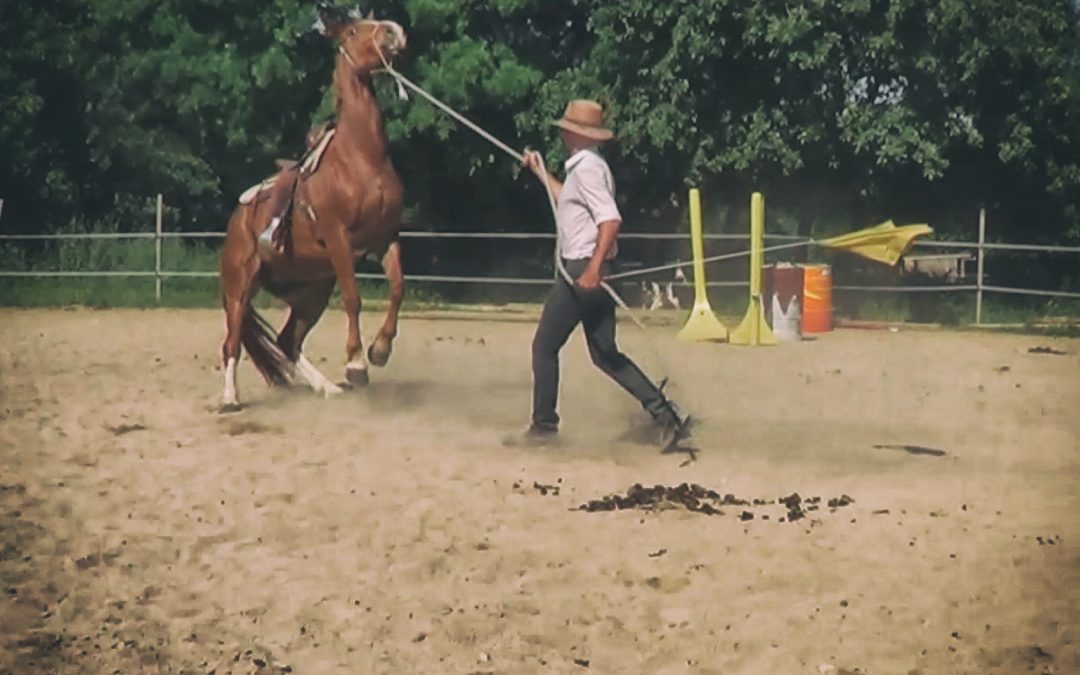A rearing horse is not just annoying, it can become dangerous. Most of the time, this behaviour is due to a lack of discipline. And I don’t mean dictatorship, I mean consistency from the human to offer a peaceful environment to the horse, to make sure that horse can trust him or her all the time.
Table of Contents
Prerequisites
The Groundwork Fundamentals are the very basics you should go through with all horses in order to introduce to each other, and to make sure you can control the horse’s moves.
Security
Lateral flexion from the ground and under the saddle is a must have, this will be your one-rein stop, and will help you control your horse in case he has rearing thoughts.
Fixing a rearing horse
Most of the time, rearing is a reaction due to nervousness, and frustration. A horse that is relaxed and trusts you will not rear, a horse that understands all your cues and has a goal will not rear. Usually, a horse starts to rear because he does not understand a cue, does not respond correctly to the rider’s expectations, and receives more pressure in return. The level of pressure is so high that rearing (or bucking in some other instances) will be the most instinctive reaction.
Once the horse understands that riders can not control such reaction, it becomes a response: Whenever he wants to get rid of his rider, to challenge a cue or move away from pressure, he rears… On the other hand, the mechanical process implies that the horse raises his head high, forelegs being straight, the horse is unbalanced.
The idea to fix the problem is to fill in both psychological and physical gaps:
- Psychologically, you need to clearly establish your leadership from the ground first. The horse will not listen to you unless you know what you want, how to express it, and how to release pressure. Your cues must be crystal clear, and your hands as light as possible. On the other hand, you should not let your horse take advantage of your kindness and being firm is necessary to set the limits, and establish your status.
- Physically, you should teach your horse a good posture, and here the Soft Feel will be your best tool to collect your horse. Indeed, the Soft Feel will help him keeping his nose down, and getting a good balance. From this posture, the horse is a lot less prone to rear, and you can easily take control of the hind legs.
Tip:
Backing up is the best way to move backwards. Some may think that it’s dangerous to try to back up a horse whose tendency is to rear. It’s actually quite the contrary when you understand the importance of releasing pressure at each and every step, then you teach your horse to feel good with this manoeuvre, to feel confident and balanced.
